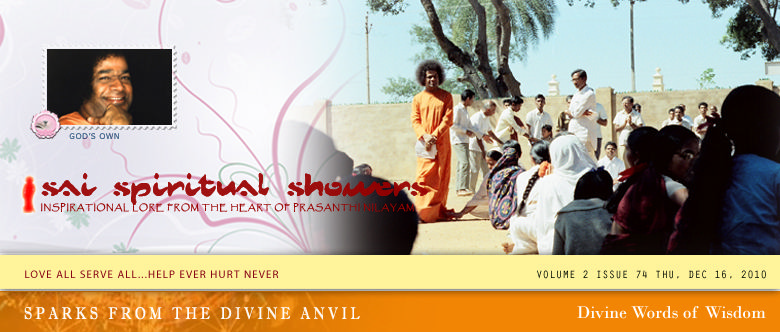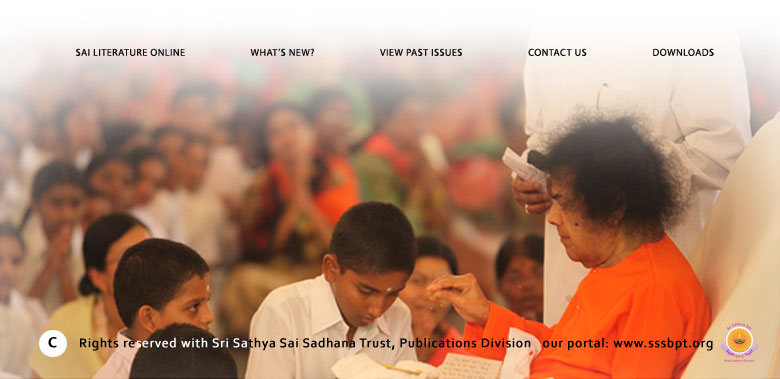 |
 |
 |
Vaikunta Ekadasi is so called because, in many Vaishnavite Temples, that day is celebrated as the day on which the doors of Vaikunta, or the Heavenly Residence of Vishnu are kept open, so that all who observe the Ekadasi ritual can enter and attain Bliss. In Srirangam and other shrines, this is demonstrated by appropriate ceremonies and the distribution of Amritam, or the Heavenly Nectar of Immortality, symbolised by a sweet compound of honey milk ghee sugar and plantains. All this is in keeping with the Hindu practice of concretising in understandable language the great verities of spiritual science. It does not mean (nor is it taken to be such) that Heaven or Immortality can be won only on one day in the year or that mere partaking of the sanctified sweets will grant Immortality. The legend behind the festivity goes like this: Indra, who insulted the gift of flowers that was brought from the Lord by Durvasa, was punished for his pride (and the pride of the Gods which he personified); he and the Gods lost their splendour and were the victims of Asuras. They represented their plight to Vishnu and He offered to restore them to power through the Churning of the Ocean of Milk (the Mind) with the mountain of Mandara (Buddhi) with the Vasuki (Tapas) as the rope. The Lord Himself became a tortoise to bear up the Mandara peak while the churning process was on. Danavas and the Gods co-operated in the act and both good and bad emerged from the Ocean. The Lord had told the Gods not to dread the bad, not covet lesser things than Amrita, nor to feel envious if the Asuras get those things. They obeyed and at last, when the Poornakalsa of Amrita emerged, the Lord doled it, as Mohini, only to the Gods and not to the enemies of Godliness. They fasted for a day, and sat on Kusa seats facing east, wearing new clothes after ceremonial bath japa, worship, homa and gifts to the cow and to those well versed in Sastras. When they drank tire Amrita which came from Narayana's own Hand, the Gods were invigorated and they won a great victory over the forces of death and destruction. Vaikunta means the Abode of Bliss; Baba often addresses gatherings of persons who have assembled to listen to His Discourses, as 'Anandswaroopulara' `Amritaswaroopulara' etc, that is to say, as Embodiments of Bliss or Embodiments of Immortality in order to draw attention to the Truth which is hidden from our consciousness, for, according to Him, we are in Vaikunta, all the time, though we have forgotten to recognise it and we feel we die and get born, out of sheer ignorance of our Immortal Reality! The doors of Heaven are ever open at Puttaparthi, for Lord Dakshinamurti is ever giving Atmabodha here, the Atmabodha which makes man, "Sarvavith, sarvagatha and amrita," all-knowing, all-pervasive, and immortal. The Sadhaka in Vedic times prayed "O Rudra, O Tryambaha, Give me release, just as the cucumber gets release from its stem; release me so, from death, but, not from Immortality." He wanted to be immortal, to escape from the cycle of birth and death. He wanted that the death at the end of this life be easy and the last experience for him. Baba too gives release from death while binding one to Immortality. Mrityu is spoken of in the Rig Veda as a bandhu, man's unseen companion, and Baba educates us all to develop an undisturbed and unfearing attitude towards that bandhu. No wonder, Baba the Avatar of Narayana has often made this day an "Amrita Ekadasi" for the thousands who gather to have His Darshan. On this day, He `materialises' the symbolic Atmamritam, as sweet as His Teaching and as Fragrant as His Glory. He vouchsafes it as an initiation to the discipline that will carry the Sadhaka to the very door of Heaven, the very Fountainhead of Immortality. A sneak peek into the occasion in 1960 illustrates the grandeur of festivity in the olden days, in the immediate Divine Presence. Over a thousand Bhaktas from various parts of the country assembled at Prasanthi Nilayam, for the Vaikunta Ekadasi on 9th Jan 1960, to have the Darshan of Baba and His Blessings. They all gathered round Baba in the evening on the sands of the Chitravati riverbed. Baba spoke for about an hour, on the Mortal and Immortal in man, and said that everyone is an Amritaputra, and hence, the desire in everyone to attain Immortality. In fact, one dies when one is born in this transitory world and one’s funeral drum starts beating, as soon as one is born. He said that Immortality is won by the development of Sadgunas and the destruction of the outward leading Mind. Then, while speaking of Namasmarana and of the Trinity and the emblems, especially of Vishnu who is more intimately connect with Vaikunta Ekadasi, He ‘materialised’ from the sands a charming Shankha, with five whorls, encased at both ends in lovely silver inlay! Then He “took” small screw-topped silver vessel full of Amrita, of incomparable fragrance and sweetness. He “took” also a tiny little miniature cup, for distributing the Nectar to the devotees! The thrilling series of Divine manisfestations had a magnificent finale when Baba “materialised” a block of Vibhuti from the sands. Later, Baba Himself with His own Hand gave each one of the devotees a “cup” of the Amrita which miraculously kept on increasing in quantity, as His Unique Prasadam and as an Initiation into the newer life of Spiritual Sadhana. |
